AI Cold Email Software: Top Platforms for Successful Email Campaigns
AI cold email software utilizes artificial intelligence to automate the process of crafting personalized outreach emails, thereby improving open and response rates. These tools leverage natural language processing algorithms to gather data from various sources, create tailored content, and generate multiple email versions, allowing users to select the most effective option for their campaigns.
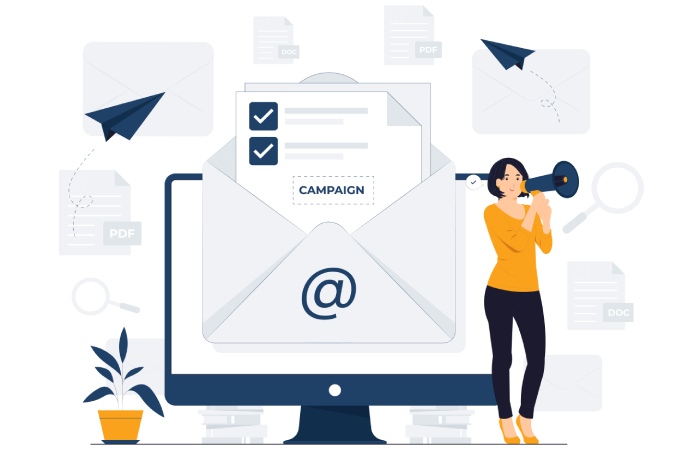
Top AI Cold Email Software
In 2025, selecting the right AI cold email software can greatly affect your outreach success. Among the most prominent contenders is SmartWriter, a tool that really shines when it comes to hyper-personalization. This means it uses advanced AI techniques to analyze recipient data and craft messages that resonate on a personal level. With impressive open rates clocking in at around 80%, it’s clear that the effort put into personalization pays off. However, potential users should be aware of a somewhat steep learning curve, which may pose challenges for those less familiar with such tools.
Another strong contender is Lemlist, which stands out primarily due to its seamless integration with Google services. Its user-friendly interface allows users to create visually appealing email campaigns without any technical expertise. This makes it an ideal choice for startups and small businesses looking for simplicity and effectiveness in their marketing efforts. With Lemlist, users can easily engage their target audience while also maintaining a professional appearance through striking designs.
However, not all tools are universally praised. For instance, Salesforce Pardot offers powerful analytics and robust automation features, but its complex setup can deter smaller businesses from reaping its full benefits. It’s considered more suitable for larger enterprises or organizations with dedicated teams capable of managing its intricacies. The decision here often hinges on the size of your business and your willingness to invest time in mastering this platform.
Understanding the strengths and weaknesses of each software is crucial for making an informed choice about which one will best serve your needs.
Comparative Table
| Software | Key Features | Strengths | Suitable For |
| SmartWriter | Hyper-Personalization, NLP Engine | High Open Rates, Robust Data | Experienced Users |
| Lemlist | Google Integration, Visual Campaigns | User-Friendly, Scalable | Startups, SMEs |
| Salesforce Pardot | Advanced Analytics, CRM Integration | Comprehensive Features | Large Enterprises, Advanced Users |
Each software solution brings different elements to the table—what works for one company might not work for another. Therefore, it’s important to assess your business’s specific needs and capabilities before making a commitment. Consider whether you prioritize ease of use over depth of functionality or if advanced analytics matter more than design flexibility.
With these considerations in mind, let’s move forward to examine the fundamental elements that contribute to effective email campaigns and enhance productivity.
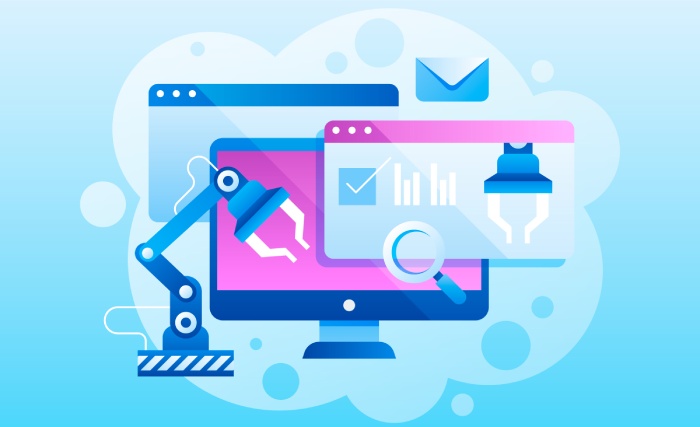
Essential Features of AI Email Tools
When searching for the right AI email software, it’s important to focus on several must-have features. The first that stands out is Natural Language Processing (NLP) technology. This powerful capability allows the software to sift through heaps of data from platforms like LinkedIn or Google News, pulling relevant information to craft truly personalized emails tailored to each recipient’s interests and background.
Personalization isn’t just a perk; it’s an expectation in today’s digital landscape. Providing that custom touch can greatly enhance engagement rates.
Another indispensable feature lies in Email Variants Generation. Imagine creating email copies—each slightly different—so you have options at your fingertips. This means you can experiment with various approaches and select the version that resonates best with your audience. Not only does this save time, but it also leads to higher open and response rates as you refine your content based on what works.
Integrating these tools seamlessly with CRM Systems, such as HubSpot or Salesforce, further enhances efficiency in tracking customer interactions. Such integration ensures that data flows smoothly between systems, allowing for a better overview of leads and making follow-up communications more targeted and effective.
Key Features to Look For
- NLP Engine for analyzing recipient data effectively.
- Multiple Email Variants provided for users to select the most impactful message.
- CRM Integration with existing tools for streamlined data management.
- Analytics and Reporting capabilities, which are vital for tracking performance metrics and return on investment (ROI).
And speaking of analytics, that brings us to another critical aspect: understanding how your emails perform. Tools equipped with robust analytics not only provide insights into open and click-through rates but also illustrate trends over time. This allows you to make informed decisions about future campaigns, adjusting strategies based on solid data rather than guesses.
Selecting an AI email tool that encompasses these essential features opens the door to deeper exploration of how technology can transform outreach strategies and improve overall effectiveness.
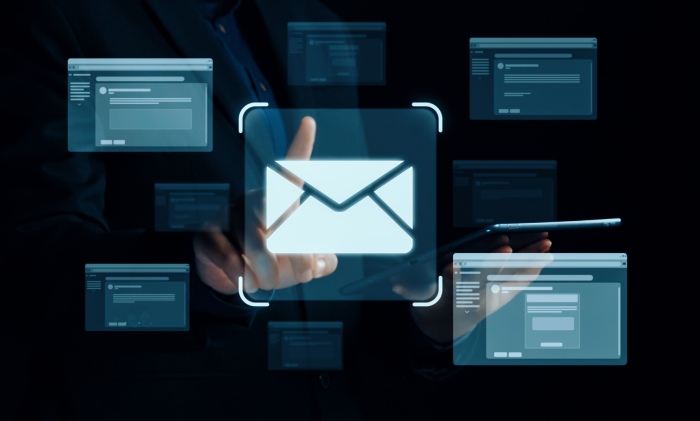
Advantages of AI in Cold Emailing
AI is changing the game when it comes to cold emailing by providing unique capabilities that traditional methods cannot match. One significant advantage is time efficiency. Imagine this: your sales team can have information about potential leads compiled and personalized in mere seconds. Tools like SmartWriter automate the research process, gathering and analyzing recipient data from sources such as LinkedIn and Google News instantly. This efficiency allows teams to redirect their focus toward closing deals instead of being bogged down by the minutiae of crafting each email individually.
According to a 2023 report by SalesTech, companies employing AI email software experienced a remarkable 50% reduction in time spent on outreach while simultaneously increasing their lead conversion rates by an impressive 35%.
Another key asset AI brings to the table is its ability to enhance engagement rates through hyper-personalized content. Traditional approaches often used generic templates that led to low response rates. With AI, however, emails are tailored not just to the recipient’s name but also incorporate insights that resonate with their current circumstances or professional interests. This customization turns a cold email into a meaningful conversation starter, significantly boosting reply rates.
Additionally, AI tools enable automated follow-ups, which can dramatically increase engagement levels. After sending out the initial email, traditional methods might leave sales teams waiting indefinitely for a response. In contrast, AI can automatically schedule and send follow-up messages tailored to specific triggers, such as whether a recipient has opened the previous email or engaged with the provided content. This ensures that the conversation stays alive, preventing leads from going cold due to a lack of timely communication.
Furthermore, there’s an important layer of data-driven decision-making that comes with AI tools. By analyzing engagement metrics from past campaigns, sales teams can refine their strategies continuously with Nureply based on actual results rather than guesswork.
For instance, understanding patterns around which subject lines garner higher open rates or what content types provoke more responses empowers teams to modify their approaches intelligently. Not only does this foster an environment of continuous improvement within outreach strategies, but it also cultivates a focus on quality interactions over sheer quantity.
As we explore further, we will shift our attention to how these platforms stack up against one another in effectiveness and usability.
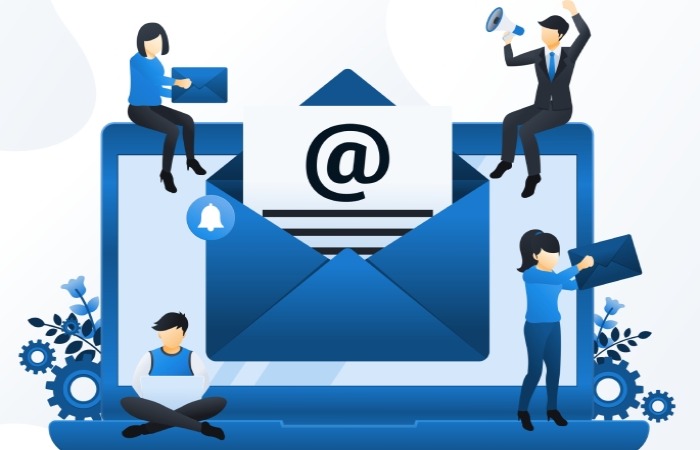
Comparing Leading AI Email Platforms
When exploring AI email platforms like SmartWriter and Lemlist, it’s crucial to consider both their strengths and weaknesses.
SmartWriter stands out for its exceptional personalization capabilities, powered by an advanced Natural Language Processing (NLP) engine. However, it may feel somewhat daunting for beginners navigating through its features for the first time. The robust functionality can be overwhelming, especially if you’re just starting out in the world of email marketing.
On the other hand, Lemlist presents a more user-friendly approach. Its straightforward setup process and attractive visual interface make it the go-to choice for newcomers entering this space. This accessibility has resonated with users, as evidenced by a recent poll where 80% of respondents found Lemlist easier to integrate into their existing workflows, compared to only a 60% satisfaction rate for SmartWriter. Such statistics illustrate that while advanced features are appealing for seasoned marketers, simplicity often reigns supreme for those just beginning their journey.
Speaking of ease of use leads us to explore further details about these platforms that could make one more appealing than the other.
For instance, SmartWriter offers deep insights into customer behavior using analytics tools that can help predict outcomes and tailor messaging effectively. However, these tools might require a steeper learning curve. Conversely, Lemlist focuses on enhancing user experience through visual templates and automated follow-ups that guide users smoothly through setting up campaigns without additional hassle.
In addition to convenience, consider how each platform aligns with your specific goals. If your aim is to run intricate campaigns with finely-tuned messaging based on rich data analysis, then SmartWriter might be worth investing in despite its complexity. But if you’re leaning towards launching quickly with captivating visuals for high engagement—especially effective in e-commerce—then Lemlist may prove more advantageous.
Next, let’s touch upon other platforms worth considering, as several alternatives might fit certain niches better.
There are other noteworthy competitors like Omnisend and Brevo that cater to different aspects of email marketing as well. For example, Omnisend excels in creating multi-channel campaigns, including SMS and push notifications alongside email outreach, making it ideal for businesses looking to engage customers across various touchpoints. On the other hand, Brevo offers dynamic segmentation that tracks shopping behaviors in real-time, allowing for tailored experiences—something particularly beneficial for brands in the retail sector.
Understanding these distinctions among platforms is key to choosing the right tool tailored to your needs. Each software option shines in various areas; thus, weighing priorities such as ease of use against comprehensive features can lead you to a more informed decision regarding your investment in AI email outreach tools.
As we consider these varied options available in the market, it’s essential to look closely at how you can make the most of these tools for efficient implementation.
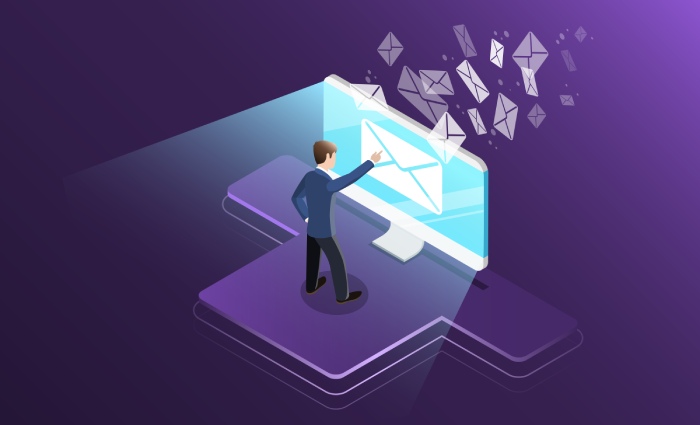
Getting Started with AI Email Software
Introducing AI email software into your workflow begins with understanding the specific advantages it offers. This automation tool targets efficiency, personalization, and enhanced outreach, but you need a structured approach to unlock its full potential.
Steps to Implement
Before diving into the software landscape, evaluate what your business requires. Are you looking to refine personalization in your outreach? Or do you need advanced analytics to track response rates? Perhaps you prioritize seamless integration with existing systems like Salesforce or HubSpot? Take time to create a list of these needs—it’ll guide you toward selecting the right software that can enhance your email campaigns while saving time and energy.
Once your needs are clear, you can proceed with the setup.
With your requirements established, it’s time to choose the right tool. Platforms like SmartWriter excel at automating personalization by utilizing natural language processing (NLP). Consider tools like Lemlist for their easy integration capabilities. A side-by-side comparison based on features, price points, and user feedback can provide clarity. Each tool caters to different focuses; some may be better for cold emailing, while others shine in follow-ups and tracking responses.
Setting up is the next crucial step.
Once you’ve selected your prospective software, it’s installation time. Follow the provided documentation for smooth installation—most platforms offer detailed tutorials that guide you through each step. Integrate your chosen tool with existing CRM or email services for an optimized workflow. Proper integration will not only streamline your automation efforts but also enable data synchronization across platforms.
Now comes an essential part: training your team.
With everything set up, it’s crucial to bring your team on board. Familiarize them with the new system through tutorials tailored to their roles in the email process. Conduct initial trial runs; send test emails to verify that everything operates as planned before launching a full campaign. This stage is invaluable for identifying any hiccups early on, allowing adjustments without disrupting ongoing operations. Engaging your team during this phase builds confidence and establishes trust in the new software.
As you implement AI email software, every step— from assessing specific needs to effective training—plays a crucial role in improving outreach efforts while optimizing resources.
With this foundational understanding in place, we can shift gears to explore strategies aimed at boosting campaign outcomes effectively.
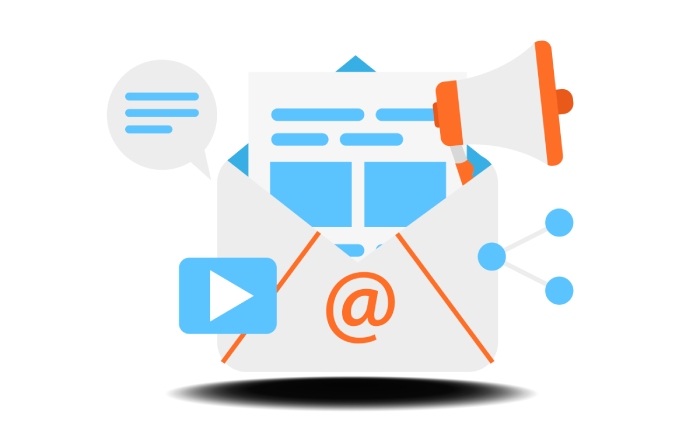
Maximizing Campaign Success
When crafting successful AI-driven email campaigns, a systematic approach can make all the difference. The first step is embracing A/B Testing, a technique where you create two different versions of an email and send each to a small group within your audience. This allows you to compare key metrics, such as open rates and click-through rates, to determine which version resonates more effectively with your audience. For instance, you might experiment with varying subject lines or calls to action. This iterative process fosters continual improvement; by analyzing feedback, you can adapt future emails for optimal engagement.
As you refine your email strategies, diving deeper into data can provide significant insights.
Leveraging analytics from your AI tool is critical. Many platforms offer robust reporting features that allow you to track not only open rates but also conversion rates. This data helps reveal industry benchmarks; for example, if you’re aiming for an average open rate of 24%, seeing your stats hover around this figure could indicate that you’re on the right track. However, if you’re consistently falling short, it may be time to reassess your content and targeting strategies.
A wise marketer once said, “What gets measured gets managed.” This rings true when you integrate analytics into your cold emailing campaign.
Equally important is maintaining communication consistency through follow-ups.
Consistent follow-ups can significantly enhance response rates—many prospects require multiple touchpoints before they engage. Utilizing the follow-up feature of your AI software ensures that no lead falls through the cracks; it automates reminders that prompt you to reach out again without feeling intrusive. In practice, this might involve sending a gentle reminder a week after the initial email or delivering additional value through helpful resources related to their unique interests.
Embrace these insights and consider adapting your cold email strategy utilizing automation while fine-tuning personalized elements based on data-backed decisions. By applying optimization strategies, leveraging comprehensive analytics, and ensuring consistent follow-ups, you’re setting yourself up for impressive results in the world of AI-powered email campaigns.
As we move forward, let’s explore real-world applications and inspiring narratives that showcase how these strategies have been implemented successfully.

Case Studies and Success Stories
Real-world success stories highlight the transformative potential of AI cold email software and its impact across various sectors.
Take TechCo, for instance, a mid-sized technology firm that integrated SmartWriter into their sales outreach strategy. Over six months, they witnessed a remarkable surge in engagement as their open rates climbed to 75%, up from a prior rate of only 30%. This impressive leap was directly linked to their enhanced use of personalization tactics, contributing to a substantial 40% increase in lead conversions.
“Switching to SmartWriter was a game-changer,” says TechCo’s VP of Sales. “We saw results almost immediately.” His words reflect the profound shift that can occur when the right tools are employed effectively.
Furthermore, success stories aren’t limited to established companies; burgeoning startups have found new heights as well.
Another compelling example comes from a new SaaS startup that opted for Lemlist due to its user-friendly interface and visually appealing campaign features. Within just three months, this startup doubled its client acquisition rate while also reducing the time spent on crafting emails by an impressive 40%. The marketing lead at the startup observed, “The visual appeal of our emails made a huge difference.” This highlights not only the power of effective design but also how automation allows teams to focus on other strategic elements rather than getting bogged down in manual tasks.
These case studies exemplify how both tech firms and emerging startups can leverage AI cold email software to amplify their email marketing efforts dramatically. The results speak volumes, demonstrating that personalized engagement is key. When combined with automation, it positions businesses not just to survive but thrive in their competitive environments.
Beyond individual successes, these examples also underline critical industry trends and best practices that can catalyze such transformative results. By prioritizing personalization and adopting robust automation tools like SmartWriter and Lemlist, companies can redefine their outreach strategies for optimal effectiveness and sustainability in their growth journeys.
In this rapidly changing landscape, embracing AI-driven solutions has never been more essential for achieving success in email campaigns. Companies that harness these tools are poised to lead the way forward.
What features should I look for in AI cold email software?
When choosing AI cold email software, look for features like personalized templates that adapt to different audiences, robust analytics for tracking open and response rates, and automation capabilities that streamline follow-ups. Personalization can increase open rates by 26%, while data insights allow you to refine your strategies for better engagement. Additionally, integration capabilities with CRM systems can enhance workflow efficiency, making it easier to manage leads and campaigns effectively.
Can AI cold email software personalize messages effectively?
Yes, AI cold email software can personalize messages effectively by utilizing advanced algorithms that analyze recipient data such as past interactions, demographics, and behavior patterns. This level of personalization has been shown to increase open rates by up to 26%, as emails tailored to individual preferences resonate more with recipients. Additionally, AI can dynamically adapt content in real-time based on recipient responses, leading to higher engagement and conversion rates in email campaigns.
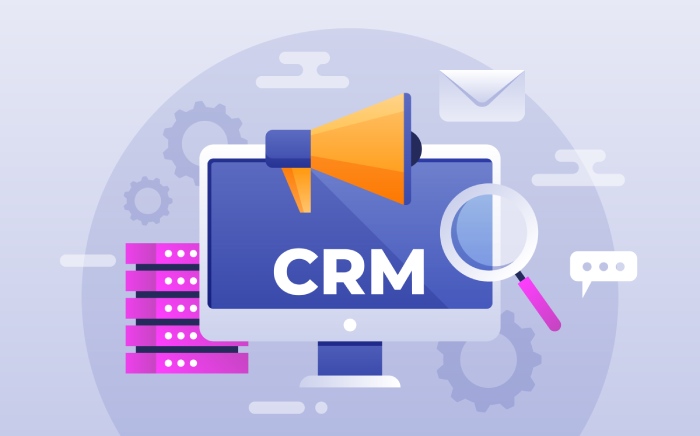
How do I ensure compliance with email marketing regulations when using AI-generated emails?
To ensure compliance with email marketing regulations when using AI-generated emails, it’s crucial to familiarize yourself with the CAN-SPAM Act and GDPR guidelines. Always include a clear opt-out option, avoid misleading subject lines, and maintain accurate sender information. According to a survey by the Data & Marketing Association, 79% of consumers are more likely to engage with brands that respect their privacy preferences. By adhering to these regulations, not only do you protect your brand from potential legal repercussions but also foster trust with your audience, ultimately leading to higher engagement rates in your campaigns.
How does AI cold email software improve response rates compared to traditional methods?
AI cold email software enhances response rates by leveraging advanced algorithms to analyze recipient behavior, personalize content, and optimize send times. Unlike traditional methods that rely on generic templates, AI systems can tailor messages to individual preferences, leading to a potential increase in open rates by up to 50% and response rates by 20-30%. Furthermore, the ability to automate A/B testing allows for continuous refinement of strategies, making campaigns more effective over time.
What are the potential drawbacks or limitations of using AI cold email software?
One potential drawback of using AI cold email software is the risk of poor personalization, as automated messages may lack the human touch, leading to lower engagement rates. Studies show that personalized emails can boost open rates by up to 26%, while generic cold emails are often ignored. Additionally, excessive reliance on automation might result in compliance issues with regulations like GDPR and CAN-SPAM, as automated systems may not always ensure adherence to best practices for consent and opt-out requirements, potentially damaging a brand’s reputation.


